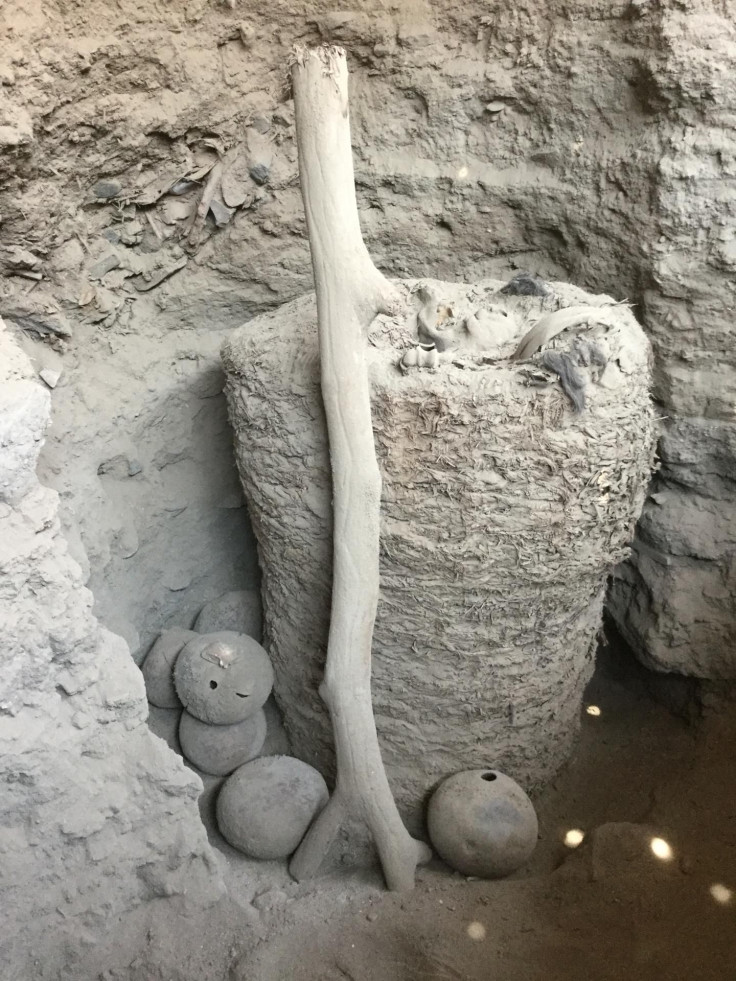Nearly Intact 1000-Year-Old Mummy Discovered In Peru

A group of archaeologists has discovered a nearly intact 1,000-year old mummy at the Pre-Colombian site of Pachacamac in Peru.
After leading nine weeks of excavation at the archaeological site, Peter Eeckhout and colleagues from Université libre de Bruxelles' centre for archaeological research (CReA-Patrimoine), unearthed the mummy and got particularly intrigued by its especially good condition. It was so well preserved that the deceased still remains “wrapped in the enormous funeral bundle that served as a coffin,” Eeckhout said in a statement while stressing on the rarity of the find.
The team has sent samples for analysis and carbon-14 dating, but their preliminary analysis, considering the tomb and the location of the find, suggests that the mummy was buried sometime around 1000-1200 AD.
Eeckhout and colleagues started excavating the site in a bid to explore three monumental structures, including a sanctuary dedicated to the ancestors of locals living in the region. This place has a rich archaeological history and served as a water and healing temple during Inca rule in the late 15th century and as a place of funeral before that.
Though archaeologists discovered offerings left by worshippers and pilgrims such as Spondylus shells imported from Ecuador, there was not much to learn about those buried in the funeral chambers of the sanctuary long ago. Most of the mummies were looted during the Spanish conquest of the Inca Empire. Luckily enough, the most recent set of excavations revealed one nearly intact chamber with the well-preserved mummy resting inside.
The researchers said the condition of the whole thing is good enough to learn about the mummified person’s past — position and pathologies he/she might have suffered from — as well as the offerings provided to them, without actually unwrapping the bundle. They will employ X-ray scans, axial tomography, and 3D reconstruction techniques to make the task possible.
But that was not the only discovery they made. The excavations conducted at the other two structures also revealed ancient objects related to pilgrims and worshippers.
At the first structure, which was an Inca monument where pilgrims stayed and ancient rituals were conducted, they found offerings like seashells and other precious objects, while at the second, which was a chapel for foreign tourists, they found ancient vases, fossils of dogs and other animals, and a platform with a central hole where the worshippers possibly placed an idol. All of this, as the researchers said, indicates the Incas made a number of changes at the Pachacamac site for the pilgrims.
“Deities and their worship played a major part in the life of Pre-Colombian societies. The Inca understood this very well, and integrated it into how they wielded their power,” Eeckhout added. “By promoting empire-wide worship, they contributed to creating a common sense of identity among the many different peoples that made up the empire. Pachacamac is one of the most striking examples of this.”
© Copyright IBTimes 2024. All rights reserved.




















